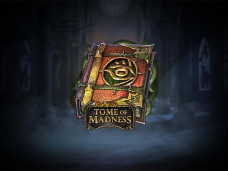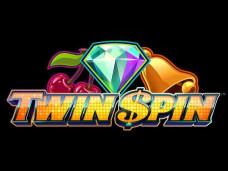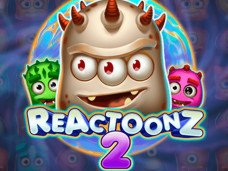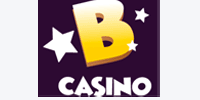What Exactly Is a Slot’s RTP?
As mentioned above, RTP is just an acronym of Return to Player, and it’s an indicator of the rate at which you should be able to receive your cashback…sort of…if you continue playing at the casino.
This figure is the percentage of your total win over the total stakes you shall be playing in any slot. However, these percentages are a theoretical value. This statement means that the figure is usually calculated after you’ve played for a certain period, contrary to what players believe – it’s calculated every time the game is played.
For instance, according to NetEnt’s official website, their hit slot, Starburst, has an RTP percentage of 96.10%. This rate means that every time you play the game, you shouldn’t expect to win an average of £0.961 every time you wager a £1 bet.
The reason for this is in other instances, this £0.961 bet that you place could end up being somebody else’s win, or another player’s stake could end up contributing to the £100 win that you’ve just cashed in. It’s worth mentioning that this figure isn’t evenly distributed in any slot, as most people would think. If this were the case, it would be the same as paying £0.04 to play the game rather than gambling. If developers fixed this percentage on each spin of the reek, who would even bother playing knowing that they’d be losing?
The beauty and excitement of gambling lie in the uncertainty; the notion that for every £1 you spend on a video slot, you could be taking up other player’s £0.96 and end up winning £4. The RTP is the measure of the video slot played by all players combined.
Therefore, if you manage to cash in £200 from a £10 bet, you can easily conclude that your personal RTP is 2,500%, which can also mean that other players enjoying the same game could have been playing with a much lower RTP than the one advertised.
Why Should You Pay Close Attention to the RTP Percentage?
You are probably thinking from the outgoing section: If a slot’s RTP isn’t even an accurate representation of one’s gameplay, why should I even consider it?
Well, looking on the other side of the RTP, it represents the house edge. Every online casino website has the house edge, or if you like a house advantage in every game they offer. This house edge is the casino’s profit. So naturally, casinos are like any other business, and without making any profits, they wouldn’t be able to stick around for much longer.
Concerning the RTP, the house edge is simply the complete opposite of this figure. Therefore, for a game such as IGT’s Cleopatra with an average RTP of 95%, the house edge is 5%. These two figures are significant in helping you determine whether or not the game is worth the while. While most of them won’t give a prediction of what is bound to happen in the short term, they can help you have a glimpse of the long-term consequences and, in the long run, indicate how fair and generous a game is.
On that note, it’s worth mentioning that a decent video slot shouldn’t have an RTP of less than 94%. If you come across a game with a lower value, you should avoid them. There are a few exceptions, though – with the ever-increasing improvements in the video slots and demand for many skilled games, slot manufacturers have now developed skill-based games, which offer different levels of play. The higher you progress in the game, the higher the return to a player percentage goes.
Are the Games with a High Payout Value the Best?
With all that said, it would sound fair to say that you should always go for games with a low house edge and a high return to player percentage. On the contrary, this isn’t always the case, as you might sometimes be forced to consider other factors such as variance or volatility. This term refers to the risk involved in playing the game.
Slot machines with high volatility will pay out huge chunks of cash once in a while, while the low volatility slots payout frequently, but the amounts are usually small. High volatility games tend to have low return to player figures, but it doesn’t mean that you shouldn’t give them a go, no! Yes, they might be high-risk slots, but the amount they offer in wins is much more considerable than your average game. By high risk, we mean that you might spin for a while before getting substantial wins.
It would help if you had at least a payout rate of 101% to make a profit. The problem is, no casino game has such a rate. None of them even have a 100% payout ratio. The highest rate you can get is 99.87%, which is only available in very few games. In other words, the advantage is always in favour of the gambling operator, and all the games are designed to make you lose in the long run. So even if you earn a prize once in a blue moon, you will ultimately lose if you continue to play.
You should evaluate casino payout values following these explanations. If a payout rate is 95%, for example, this means that you can recover 95 USD of every 100 USD you have invested. So your financial loss will be no more than 5 USD. If you are lucky enough, you may even make a profit from time to time. However, as explained above, you will permanently lose in the long run.
The payout value indicates what the amount of this loss will be. If we go back to the example above, the House will earn 5 USD for every game you play. Of course, you can occasionally win a high payout and think that you “broke the bank.” But if you continue to play, you will eventually lose that winning. Games based on luck are designed to give the advantage to the casino – not you.
Game Payouts and the Famous “RTP”
Payout and RTP (return to player) have the same meaning. Like casinos, games have their RTP (payout) values. A payout value shows the average RTP rate of all the games in that casino. So, for example, a rate of 97% does not mean that all games have at least that RTP ratio. Casino payout values are average figures, and players should only use them to get an idea.
Professional players check the RTP value of each game in advance. Ideally, whichever game you play, this value should be at least 94%. (The same applies to casinos.) If you are playing a game with a lower value than this, you will not be able to profit even if you score a winning once in a while. To get an idea, you can see the average RTP values of the major casino games in the table below:
| Name | Return to Player (Average %) |
|---|---|
| Slot Machines | 88 – 99 (different for each slot) |
| Blackjack | 98 – 99 |
| Video Poker | 98 |
| Roulette (American) | 94 |
| Roulette (European) | 97 |
| Baccarat | 98 |
| Bingo | 71 |
| Keno | 93 |
However, you should note that the data in this table show average values. For example, if blackjack is played with a single deck and according to the Vegas rules, its RTP value is 99.72%. In video poker, it goes up to 99.54% in variants like “Jacks or Better.” In other words, it is best to check the RTP rate of each game before starting to play.
How to See the Payout/RTP Rates?
You cannot see these rates at the terrestrial casinos – you need to ask dealers. However, at online casinos, this is a much easier task:
- To see a casino’s payout rate: Look at the bottom section of the website’s homepage. All legal information about the casino is in this area. If the casino announces its RTP values publicly, you can see the related link about this info in this section. However, not every casino does that. Legally, there is no obligation to declare average payout values. Nevertheless, almost every prestigious and respected online casino prefers not to hide their RTP rates and declare them.
- To see a specific game’s payout rate: It has a paytable screen for whatever game you are playing. From this screen, you can see both the rules of the game, the winning conditions, and the RTP value of that game.
The RTP check is especially recommended for slot machines. This fact is because the payout values of other games do not vary significantly. However, slot games have RTP rates starting from 88% and up to 99%. In other words, they are highly variable and therefore, it is almost necessary to check in advance.
Practice. Adapt.
We are sure that you heard the “payout” term before. However, if you are not a professional gambler, you probably don’t know the real meaning. Simply put, the casino payout is a percentage figure, and it shows the “payback” value of the casino for your investment. The higher it is, the better. It should be as close to 100 as possible. However, it will never exceed 100.
A little confusing, right? Let’s start from the beginning. If you are playing a game based on luck, you will expect to make a profit. If the payout rate of that game is 100%, you won’t be making any profits. A 100% payout rate only means that you can recover all the money you have invested. So investing 10 USD, for example, and winning back the same 10 USD even if you are lucky enough, makes no sense.
Although knowing the payout values gives you an advantage, it’s not enough to win. It would help if you practiced a lot before everything else to increase your chances. You can practice as much as you like using free versions of the games on our website. No games are subject to a limitation in terms of features, and you can play as long as you like. You can also see the best online casinos to play with real money from our reviews page.





































